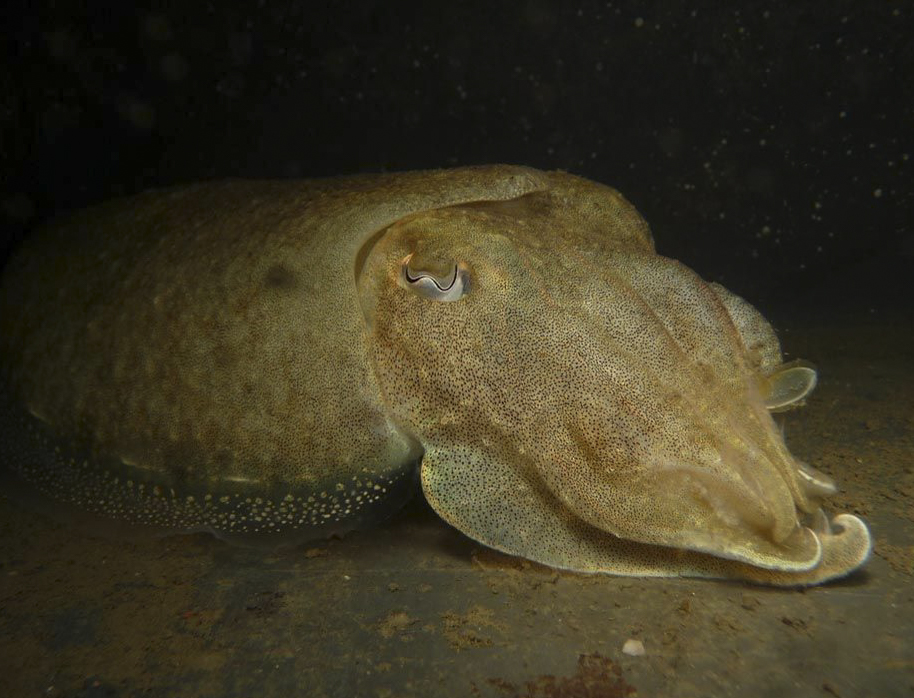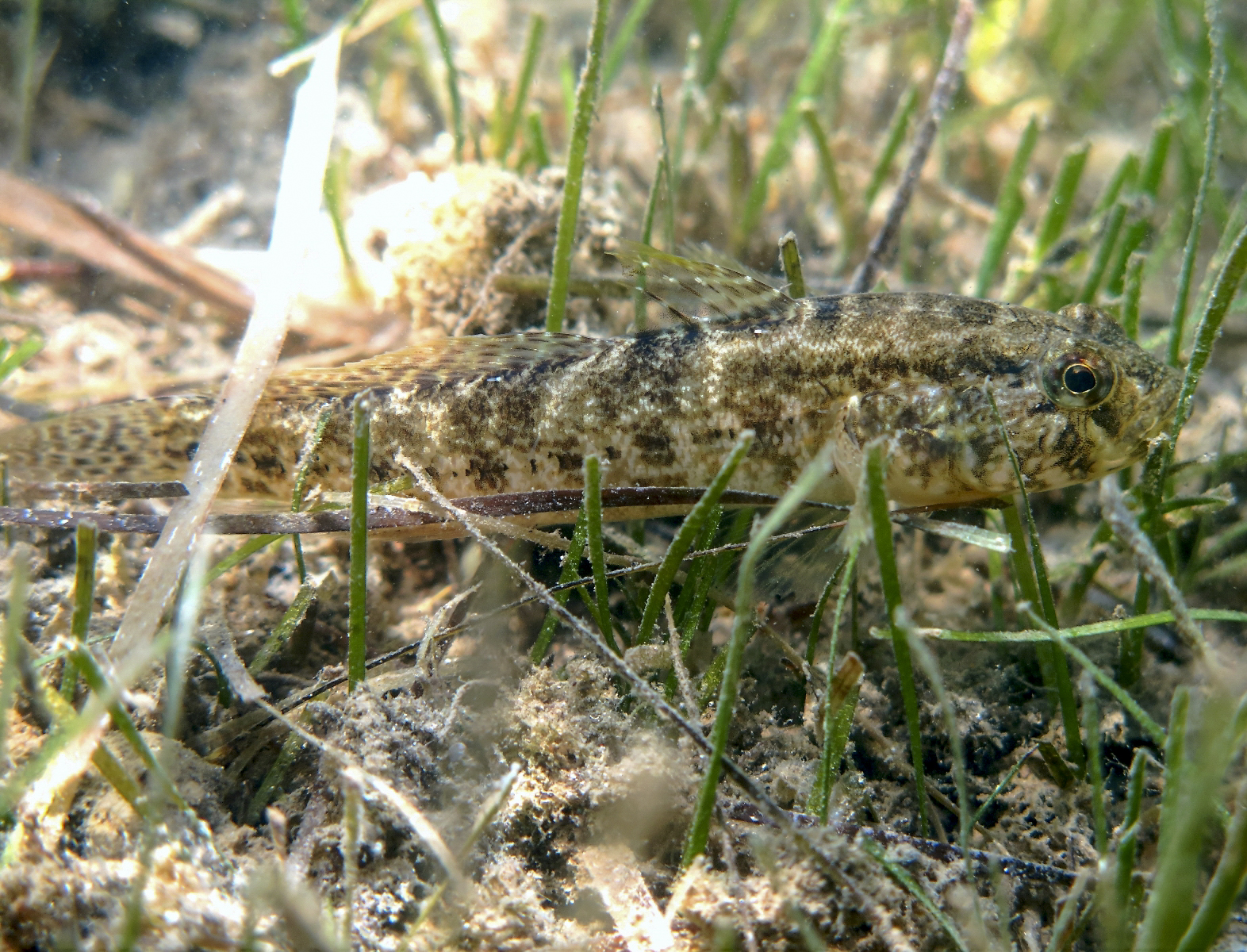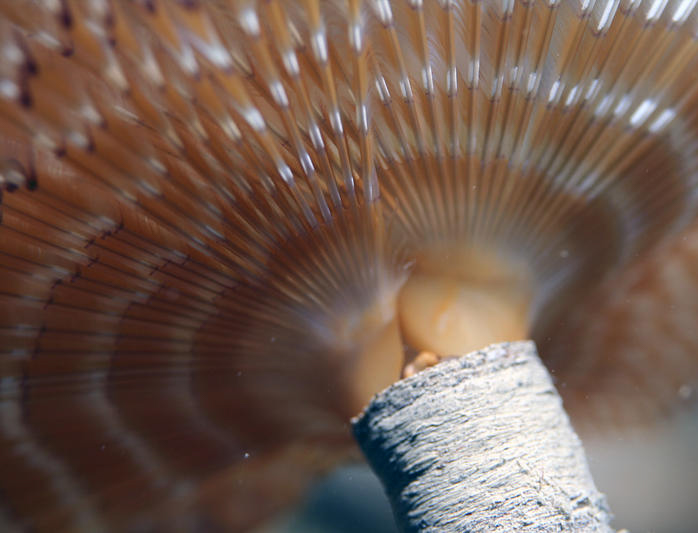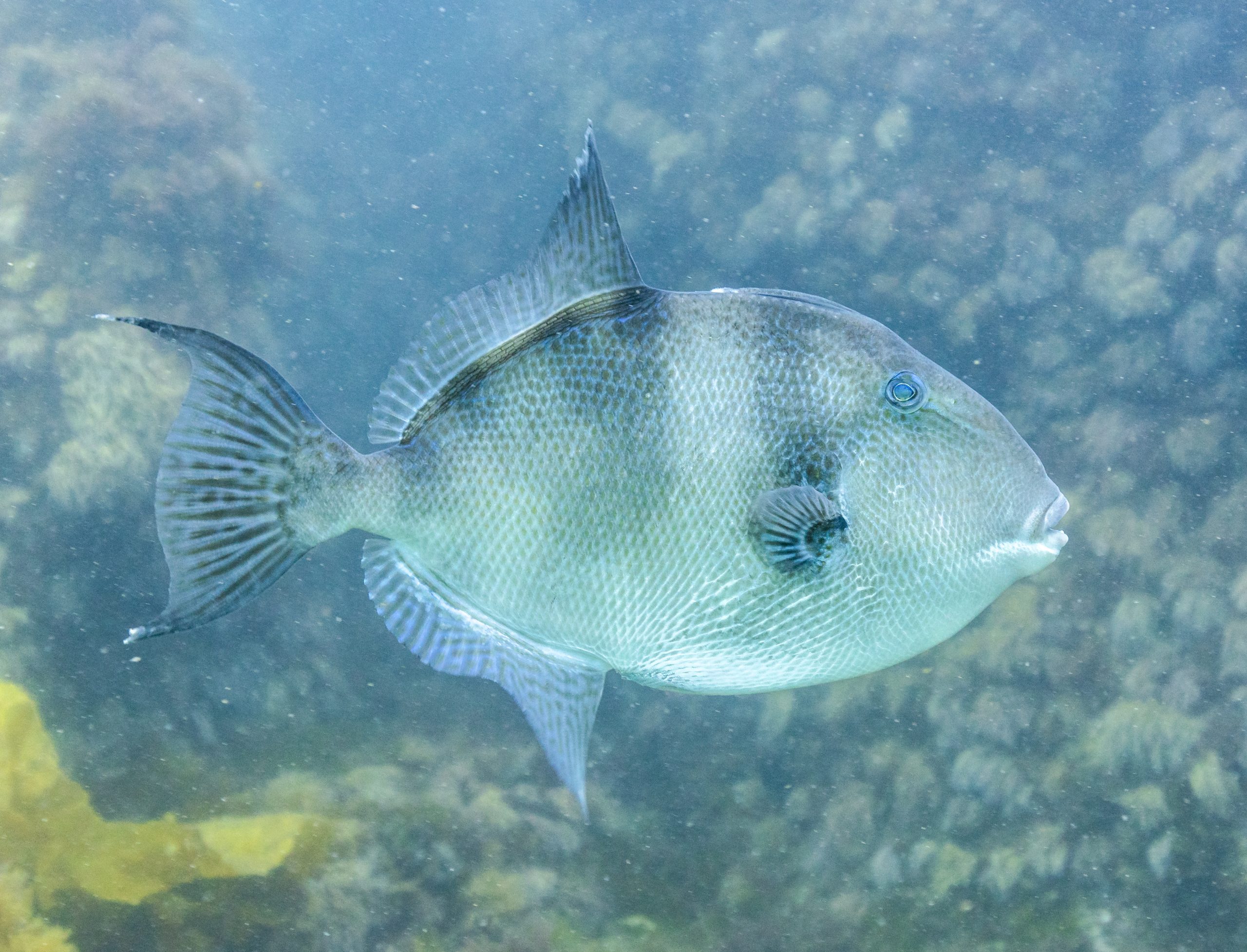The spirographer is a marine worm that is similar to an earthworm in that its body is divided into numerous ring-shaped segments.
The spirographer creates a membranous tube for itself, inside which it lives. This animal is able to secrete a fibrous substance with which it builds a flexible tube around itself for protection. This tube is highly adhesive, enabling the animal to anchor itself to the substrate. Only the branchial crown emerges from this tube, consisting of bristles arranged in a spiral, resembling a tuft. These bristles serve dual respiratory and feeding functions. This splendid plume is actually made up of gills that facilitate gas exchange and actively capture plankton. Therefore, the spirograph is a filtering animal.
At the base of the branchial crown, a series of ocelli (light-sensitive “eyelets”) are arranged. This system is very effective, allowing the spirograph to identify possible predators approaching to attack it and retract the branchial crown inside the tube. This is why, if you pass your hand over a spirograph, it will retreat into the tube at a surprising speed.
The spirograph is a benthic animal that is very common on sandy seabeds in all seas, even at great depths. There are many species of spirograph that differ in size and in the colour of their tufts. The Adriatic species is Sabella spallanzanii.





